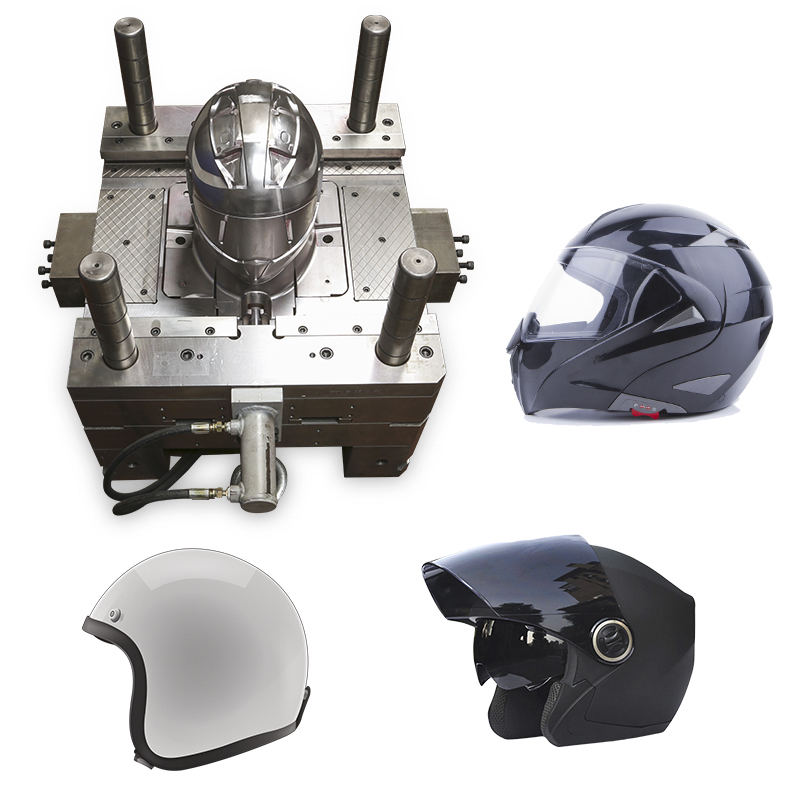Injection molding is a widely used process in the production of motorcycle parts, from components of the bodywork to intricate engine parts. While it offers high precision and efficiency, like any manufacturing method, it is not without its challenges. Problems can arise during the injection molding process that can affect the quality of the parts and the efficiency of production.
1. Inconsistent Part Dimensions
Problem: One of the most frequent issues in injection molding is the inconsistency of part dimensions. This can occur due to improper mold temperature, incorrect injection pressure, or issues with the material being used. When parts are not uniform in size, it can lead to poor fit and finish, especially in high-precision motorcycle components.
Solution: To fix this, start by checking the temperature of the mold and the material. Ensuring the mold is at a consistent temperature is crucial for uniform cooling. Adjust the injection pressure to ensure that the material flows evenly. Additionally, monitor the material's viscosity and its compatibility with the molding process.
2. Sink Marks
Problem: Sink marks are depressions or dimples that appear on the surface of the part, typically in thicker sections. These are caused by uneven cooling, where the material cools too quickly on the surface while the interior remains molten.
Solution: To minimize sink marks, optimize the cooling system to ensure even cooling throughout the mold. You may need to increase the cooling time for thicker sections or modify the mold design to allow for more uniform material distribution. Also, reducing the injection speed can help prevent the problem by allowing the material to fill the mold more slowly and evenly.
3. Short Shots
Problem: Short shots occur when the injected material does not fill the mold cavity, leading to incomplete parts. This can be caused by insufficient injection pressure, incorrect material flow, or blocked vents.
Solution: Ensure that the injection pressure and speed are set correctly to fill the mold. Check for blockages in the venting system, as inadequate venting can trap air and prevent proper filling. Increasing the material temperature slightly can also help the flow, especially for materials that have higher viscosity.
4. Flash
Problem: Flash is the unwanted excess material that forms along the edges of the part, usually at the mold seams. It occurs when too much pressure is used during injection or when the mold is misaligned.
Solution: Flash can be avoided by adjusting the injection pressure to the appropriate level for the material being used. Regularly check the alignment of the molds to ensure they are closing correctly. In some cases, upgrading to a higher-quality mold can also help reduce flash occurrences.
5. Warpage
Problem: Warping refers to the bending or twisting of a part as it cools. This often happens in parts with varying wall thicknesses, especially in complex motorcycle parts such as fairings or frames.
Solution: To reduce warping, ensure uniform cooling across the entire part. You can also adjust the mold design to have a more consistent wall thickness, as variations in thickness can cause uneven cooling. Using a material with a lower shrinkage rate or adding more support structures to the part can also help prevent warpage.
6. Surface Defects
Problem: Surface defects, such as streaks, burn marks, or discoloration, can be caused by several factors, including improper material handling, overheating, or contamination in the mold.
Solution: To resolve surface defects, ensure that the material is stored properly to prevent moisture absorption, as moisture can cause surface issues. Check the mold for any contamination or residue from previous cycles and clean it thoroughly before each use. Additionally, controlling the melt temperature and injection speed can help reduce overheating and burn marks.
7. Delamination
Problem: Delamination occurs when layers of the molded part separate due to poor bonding during the injection process. This can happen when incompatible materials are used, or when there is insufficient mold pressure.
Solution: Use compatible materials that have similar thermal expansion properties. Check the mold design to ensure that the material is injected at the correct pressure to promote good bonding between layers. Also, ensure that the mold is clean and free from any contaminants that could affect adhesion.
Conclusion
Troubleshooting issues in motorcycle injection molding requires a systematic approach to identify the root cause of each problem. By optimizing injection pressure, mold temperature, material handling, and cooling systems, manufacturers can resolve common issues such as inconsistent dimensions, sink marks, short shots, flashes, warpages, surface defects, and delamination. Continuous monitoring and fine-tuning of the injection molding process are essential for producing high-quality motorcycle parts that meet the demands of the industry.

.jpg)

.jpg)